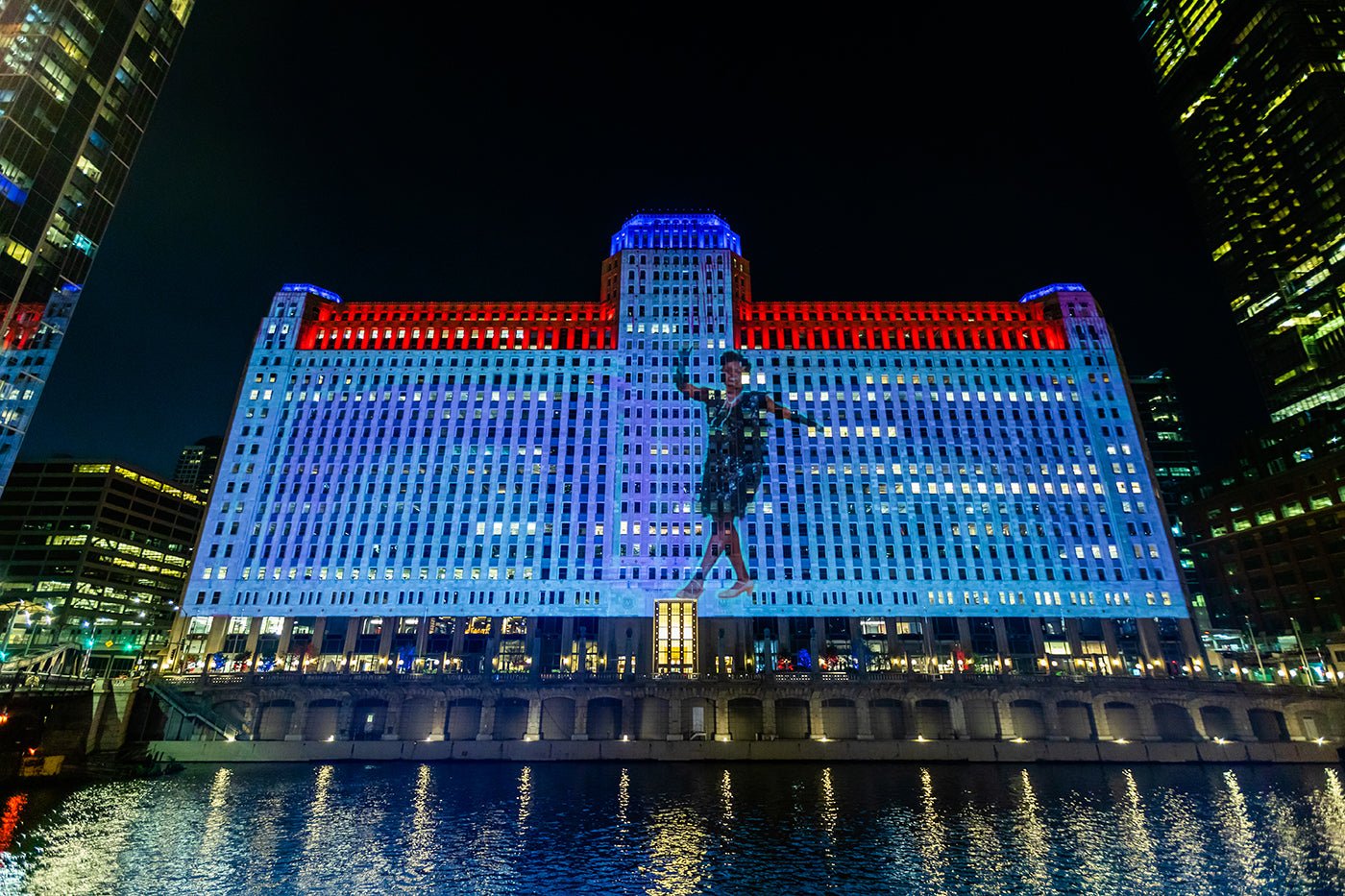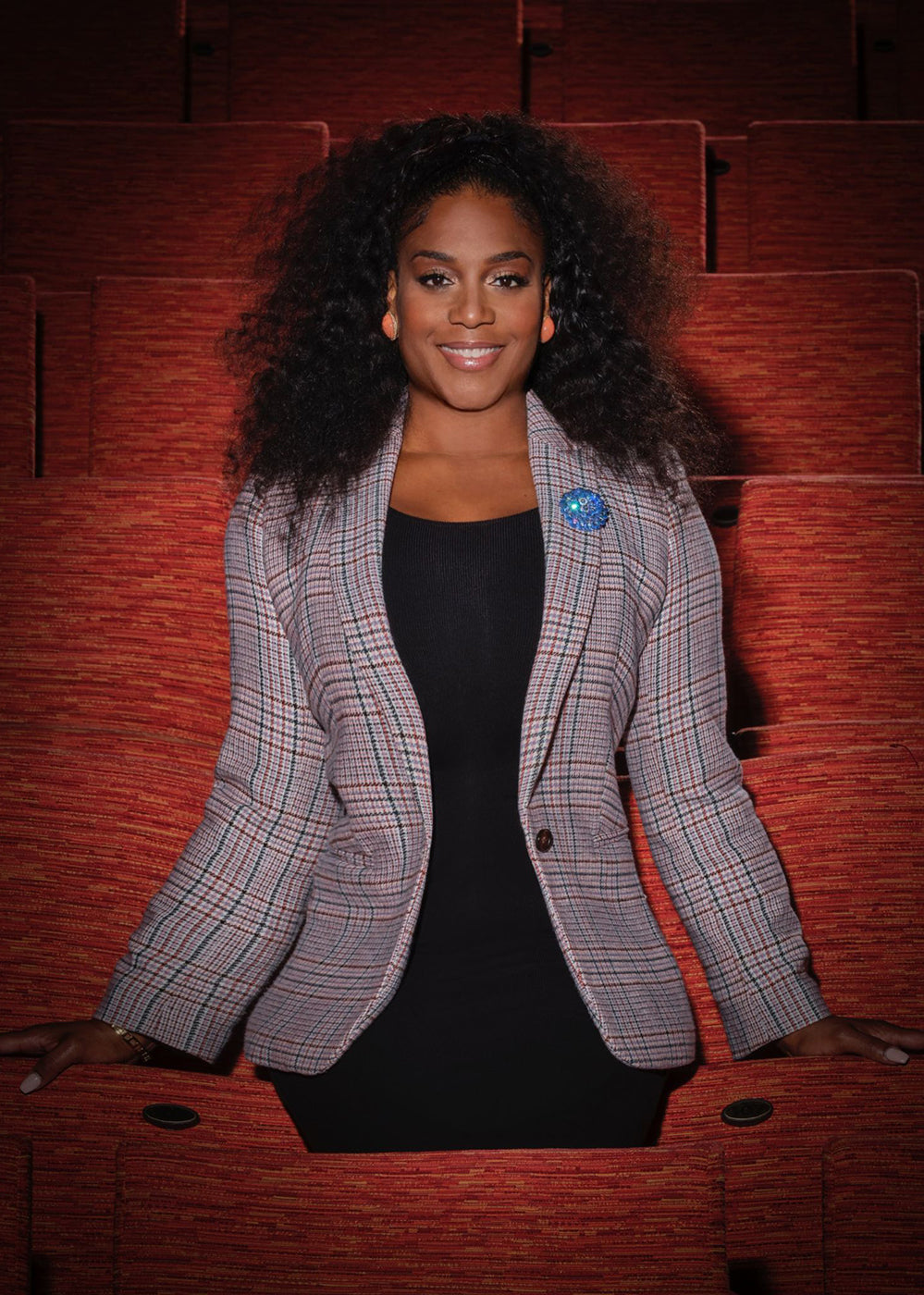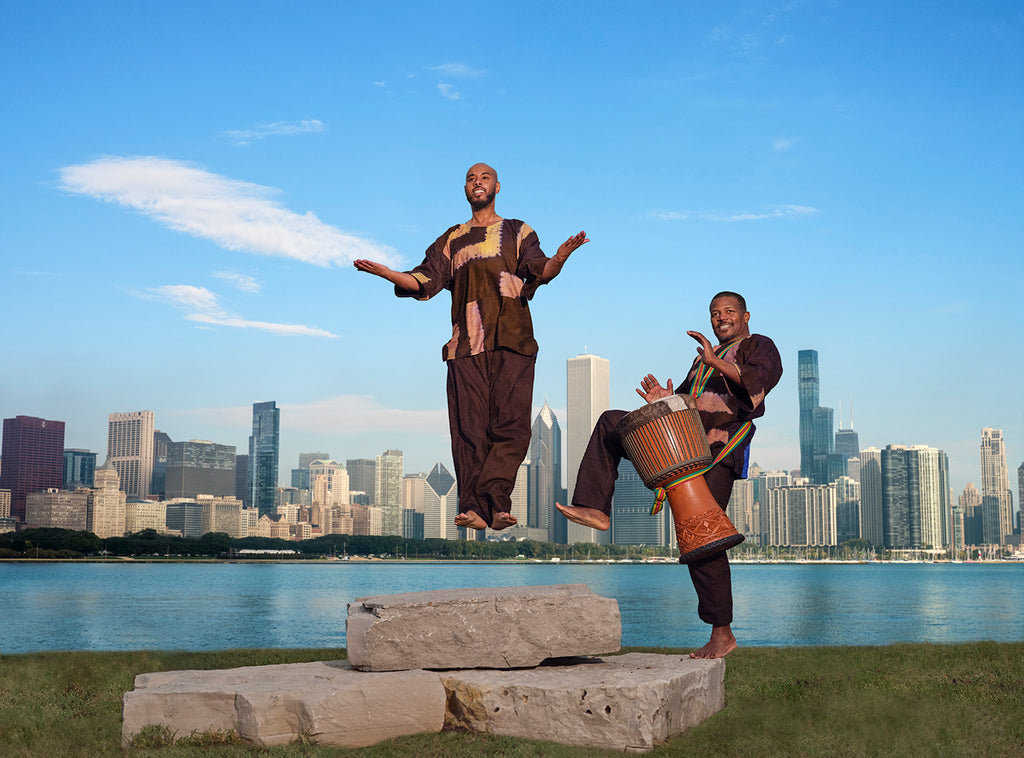Lycra and Lace
What is he looking at? The dancer in a blue biketard bounds around the stage, his curly hair flip-flopping as his head snaps right, left, and center.
Plus
World-class review of ballet and dance.
In downtown Chicago, 100-foot-tall dancers glide along the Chicago River. Projected onto the enormous digital installation Art on The Mart, the dancers of the Chicago Black Dance Legacy Project look like ancestral spirits keeping watch over the city.




What is he looking at? The dancer in a blue biketard bounds around the stage, his curly hair flip-flopping as his head snaps right, left, and center.
PlusTwo performers crawl in on hands and knees wearing neon green, hooded coveralls—the lightweight papery kind made for working in a sterile environment—and clusters of balloons pinned to their backs.
PlusWill Rawls makes boundaries visible by defying them. Known for the disciplinary and topical range of his projects, the choreographer, director, and performer approaches issues of representation in “[siccer],” a multi-part, multi-site work co-presented by L’Alliance New York’s Crossing the Line Festival. A live performance at Performance Space New York accompanies a multimedia installation at the Kitchen, a book published by Wendy’s Subway, and an album published by the artist. With a creative process reaching back to 2018, the work delves explicitly into pandemic-era energies and inertias with focused intimacy and a pervasive sense of instability.
PlusIt is always interesting when multiple theme steps emerge over the course of a mixed repertory evening, but it is uncanny on one featuring five different ballets, each with a different choreographer and composer, covering a twenty-year span (2005-2025).
Plus
comments